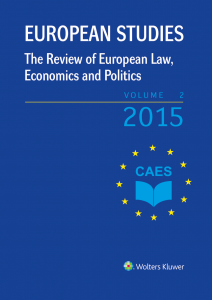The Adoption of Regulation Brussels I Recast: Analysis of the Introduced Changes
The Adoption of Regulation Brussels I Recast: Analysis of the Introduced Changes
Author(s): Hamed Alavi, Tanel Kerikmäe, Tatsiana KhamichonakSubject(s): Law, Constitution, Jurisprudence, Civil Law, International Law, EU-Legislation
Published by: Univerzita Palackého v Olomouci_1
Keywords: Brussels I Regulation; Brussels I Recast; Amendments; Judgement Recognition; Enforcement; the European Union Law;
Summary/Abstract: The Regulation Brussels I is claimed to be the most successful instrument on international civil procedure of all time.1 Together with its predecessor the Brussels Convention 1968 it has been instrumental in harmonizing the jurisdictional issues in the EU and EEA countries and reforming the process of recognition and enforcement of judgments. Recently further simplification of its subject matter has been carried out by the European law maker in the form of the Regulation Brussels I Recast, which came into force in January 2015. The paper addresses the most fundamental changes introduced by the Recast Regulation. We seek to analyses the major new amendments as opposed to the old regime under the original Brussels I Regulation and establish whether they are suited to achieve their objectives. To this end, the paper begins with Part I, which introduces the background and purposes of the new Recast Regulation. It is followed by Part II, which discusses the introduced changes: the abolition of exequatur, changes to the lis pendens rule, and the reinforced arbitration exclusion. The discussion is concluded with Part III, which gives an overview of the prognosis for the application of the newly amended provisions and the extent, to which the Recast Brussels I Regulation stands up to its purpose.
Journal: European Studies - the Review of European Law, Economics and Politics
- Issue Year: 2/2015
- Issue No: 1
- Page Range: 107-116
- Page Count: 10
- Language: English

